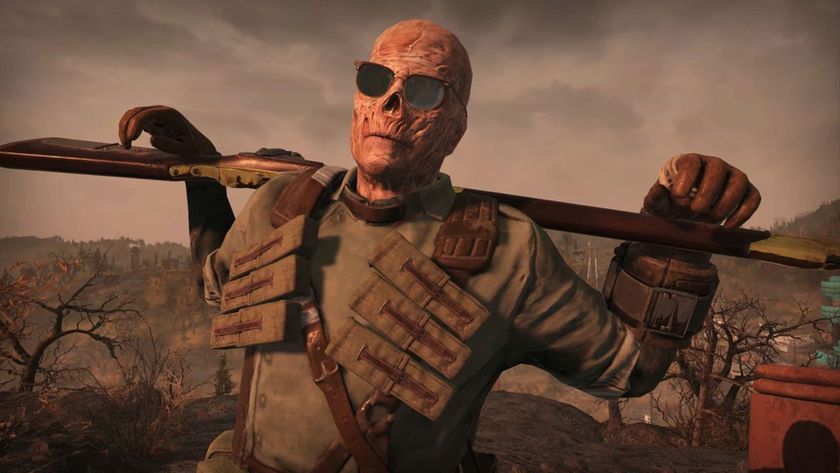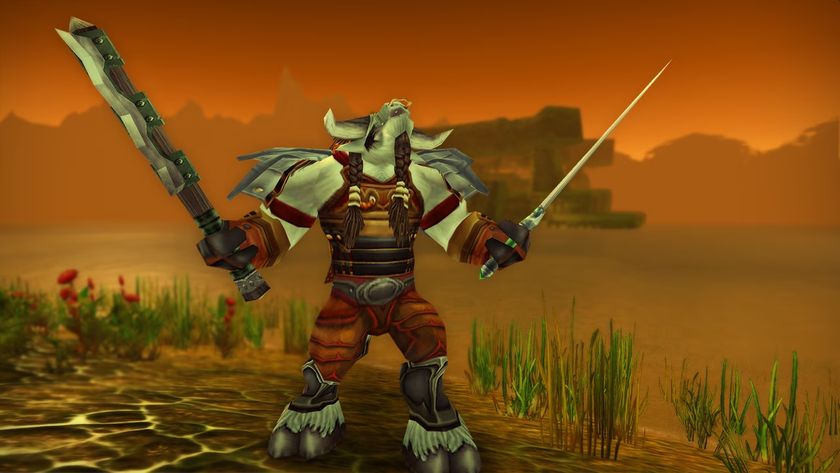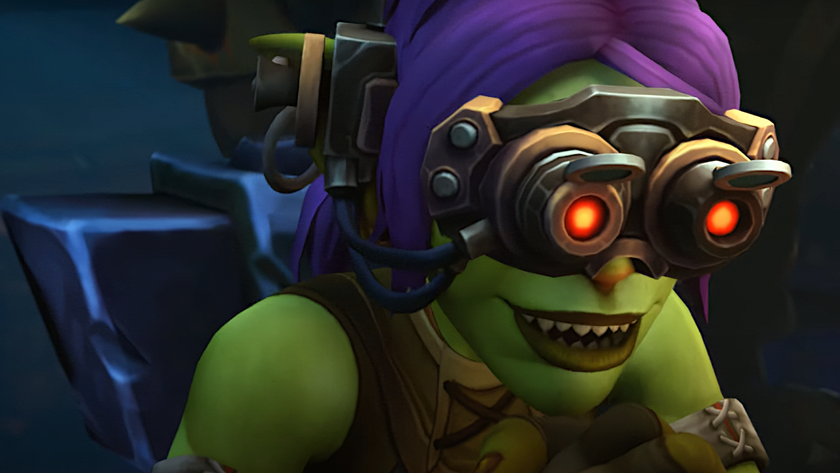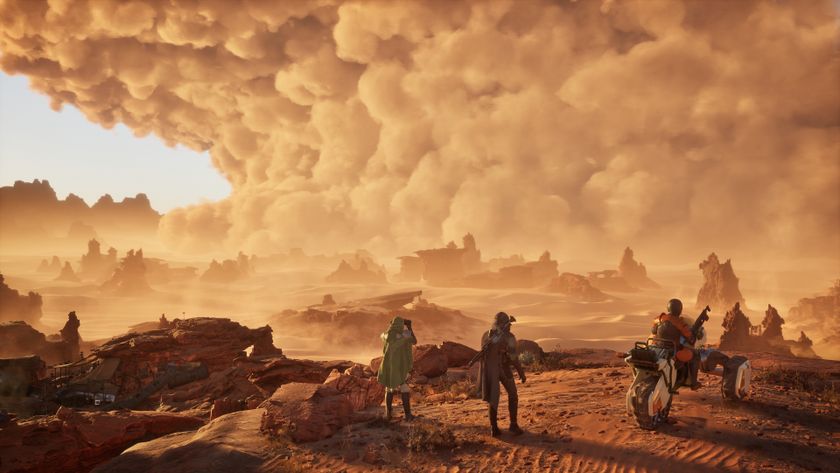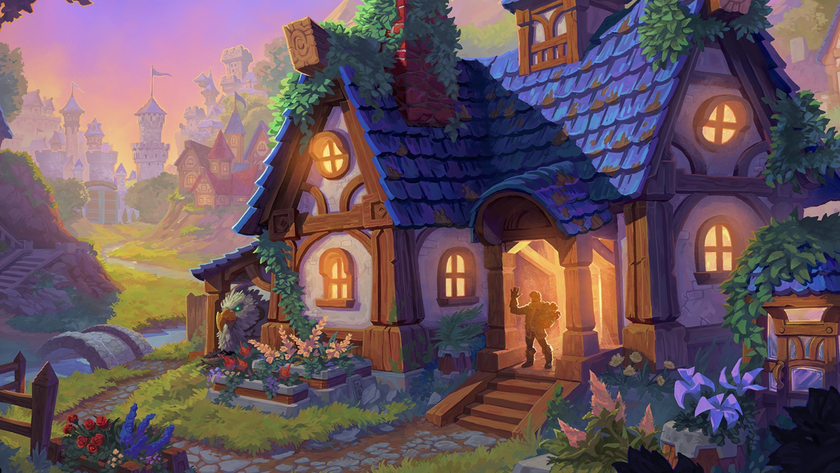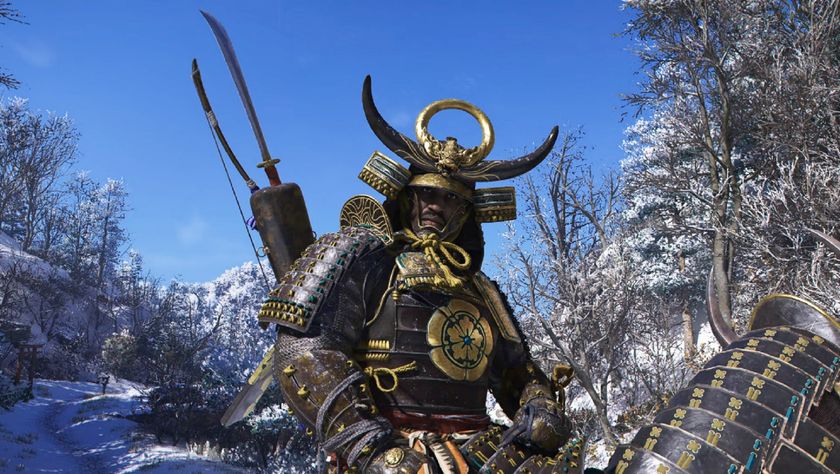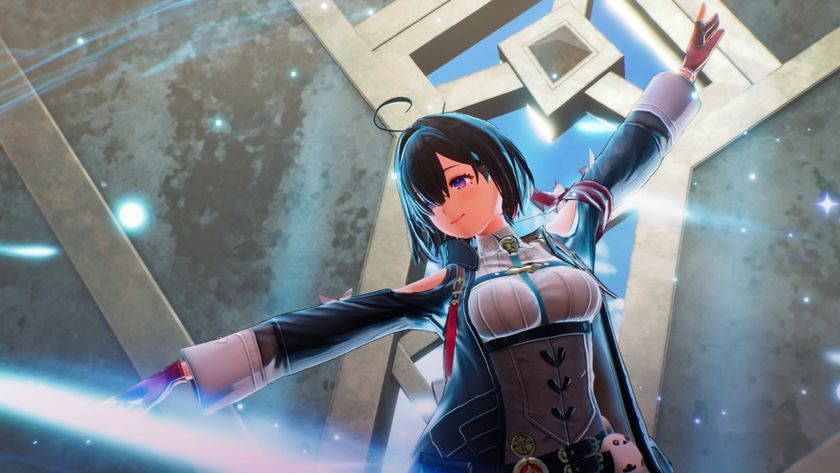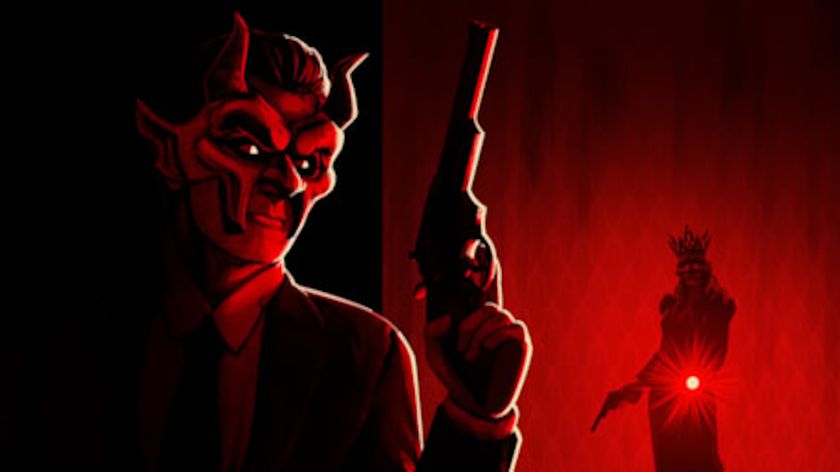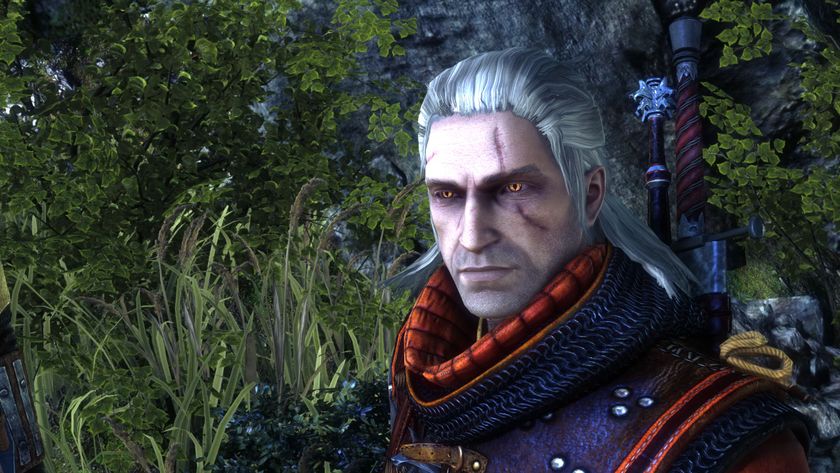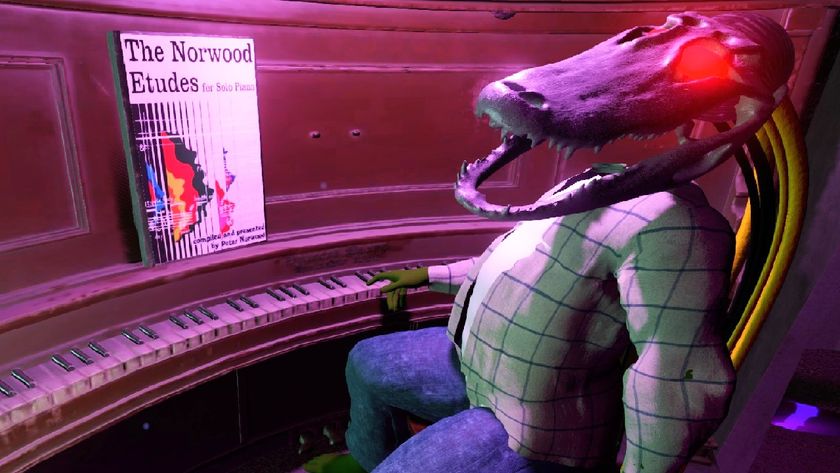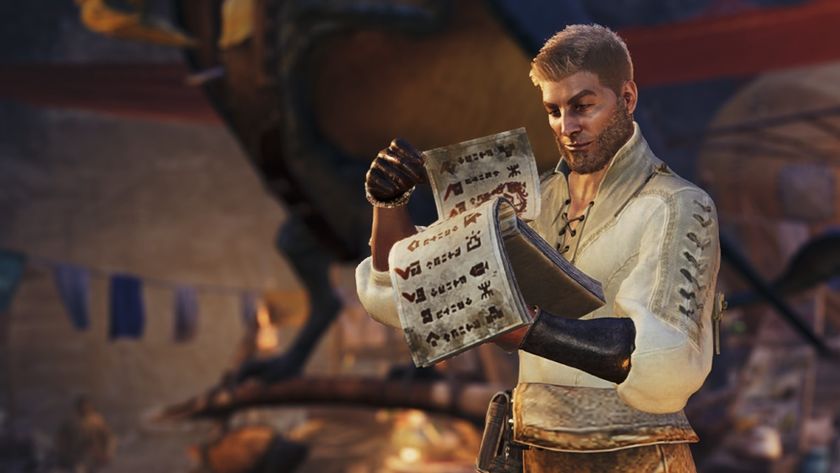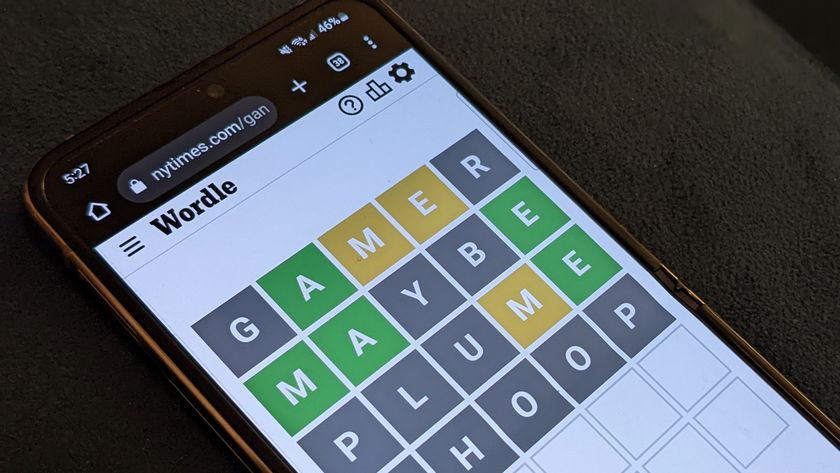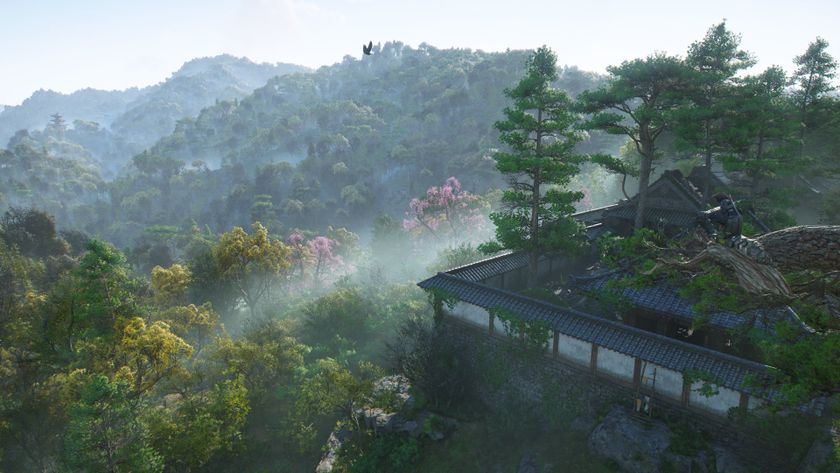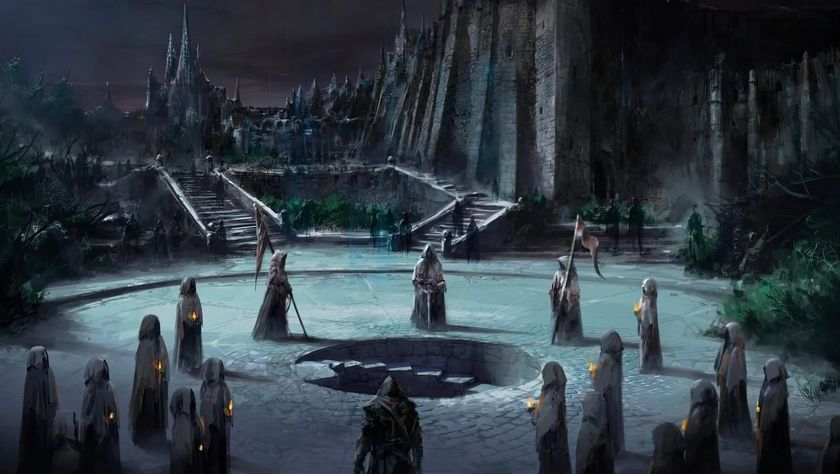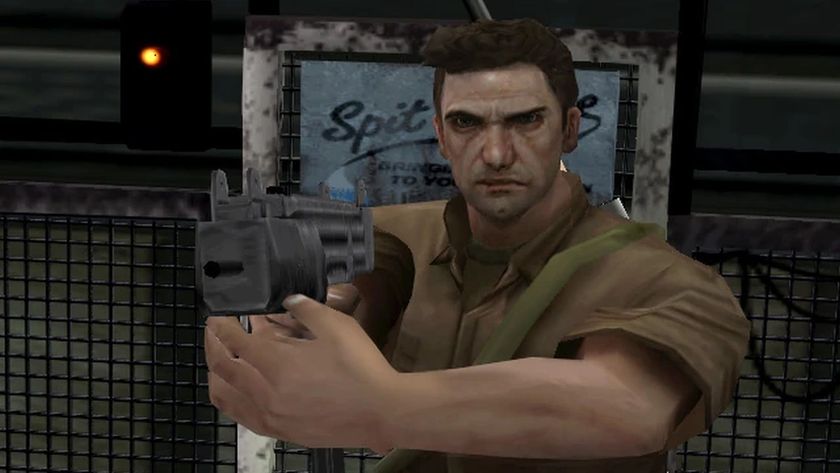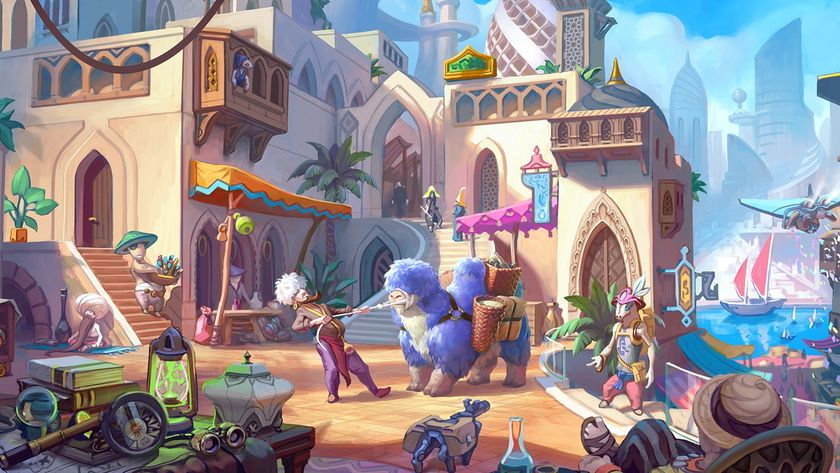Guild Wars 2 review as it happens
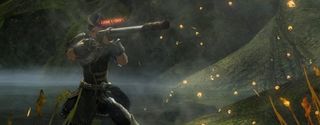
Hour 23:
The final arc of my personal story ends around level 18. It's closely tied to the biography choices I made at character creation, and it's satisfying to have a narrative thread I picked play out to what (for the moment) looks like a resolution. The next step in the story starts at level 21, so I decide to treat this as a jumping off-point and spend some time in the world.
Guild Wars 2's writing tends to play it safe: there are moments of idiosyncrasy, but it seems more concerned with telling an accessible fantasy story. I'm growing to like many of the recurring characters, but so far I couldn't quote any of the dialogue. I know from beta experience that the Asura have more to offer in that regard, however, and I also really liked the Charr.
I'm getting more and more into the world, however, and it's to the game's credit that it doesn't rely on long cutscenes to tell its story. It's far more about exploring, looking, and listening: most NPCs will explain the area they're in if you talk to them, but you can pick up just as much by paying attention to environmental clues. Later, in the southernmost part of Kessex Hills, I find a Sylvari village under attack by undead. The nearest waypoint is a short walk away, on a hillside where a group of Asura have set up camp. I don't need to be told, in that case, what the scenario is, who these people are or why I should want to help. Two factions cooperating to contain some zombies? Alright, sign me up.
I'm also really pleased with how my character is turning out. Even though I don't get to control what she says in the voiced cutscenes, I like how she's presented as proactive and fearless. When the game needs to lay out mission objectives for the next section, those plans often come from my character rather than an NPC - it's a small thing, but it prevents me from feeling like I'm being led around by the nose and reinforces the idea that the person I'm playing is the person you would want saving the world from dragons.
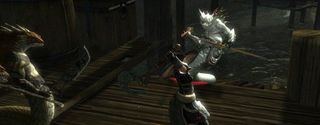
I take advantage of the break in the story to jump into world vs. world for the first time. It requires a little coordination to join with a friend: first, we both need to wait until we are out of the overflow areas of our respective zones, then we need to queue for a space in the world vs. world zone. It takes around ten minutes to get in.
We load into our faction's border zone: in our case, an expanse of rocky tundra in the northern part of the world vs. world map. Each server gets their own homeland, with a central area in the middle housing the most valuable territory. Pushing an enemy faction all the way back to their final fortress is the biggest humiliation you can visit on them.
The biggest gaming news, reviews and hardware deals
Keep up to date with the most important stories and the best deals, as picked by the PC Gamer team.
Events run in world vs. world much as they do in regular zones. They're based on the state of the war: if your faction owns two keeps connected by a road, then supply caravans will spawn and move between them. Defending these caravans from attackers will earn you experience, and if they're destroyed then you'll have fewer resources if the enemy choose that moment to attack.
When skirmishes happen they show up on the map as a crossed swords icon, directing the flow of players from one battle to another. You need to pay attention to the chat channel to find out what the nature of these fights are, however: proper reconnaissance and communication will be necessary to tell the group fights from the full-on invasions.
We make our way down the cliff paths into the zone proper, stopping to gape at the sheer scale of GW2's architecture. One of my favourite games ever was Dark Age of Camelot, which had realm vs. realm PvP that set the template for world vs. world - not surprising, given that many of ArenaNet's developers worked on it. DAOC's largest fortresses are dwarfed by GW2's, which feature massive stone walls that channel defenders towards courtyards the size of football pitches. I can't wait to see hundreds of people fighting over these.
For the time being, we don't encounter any sieges. Instead, we intercept an enemy group as they head towards one of our supply depots. Two of them drop quickly, but the third - an Asura guardian - flees across the snow. I chase him, whittling his health down with rifle fire before dropping to one knee and knocking him him down with a burst shot. My first world vs. world kill!
Back in Kessex Hills, I hit an event that doesn't really work. Not in the sense that it's broken, but it's a rare example of an occasion where I'm simply not allowed to do what I want to do. A wandering noble is kidnapped by bandits, but before I can rescue her I have to watch a surprisingly lengthy conversation play out. During this time, the kidnappers are invulnerable. As they gloat and make threats, I'm stood directly in front of their victim, firing shot after shot into their stupid, invulnerable faces. The promise of the events system is that if you see something happening and want to intervene, you can: this is the only situation I've come across where the game strong-arms you into waiting. Eventually, I can wade in and make the rescue: but it's badly staged, and hopefully an isolated incident.

More broadly, Kessex Hills is a great showcase for what the events system can do. Major encampments change hands between the centaur and the human Seraph forces based on the actions of players: if you let the centaur spread too far, then whole waypoints can be cut off. A general status indicator lets you know what state the world is in, and where the fighting is thickest. Given the high player population, the centaur are usually on the back foot.
A clever aspect of the system is that both success and failure have benefits and drawbacks. If the Seraph are losing the war, then there are far more centaur in the field and this makes several renown hearts easier to fill. The centaur have a bridge that give them better access to human lands: destroying it and holding off repair crews helps the war effort, but means you've got to find another way accross a fast-running river if you want to invade centaur territory. This prevents any given set of circumstances from feeling like they're totally in your favour, which should encourage players to pitch in even when their side is losing.
Another friend jumps in from Norn lands to join me in Kessex Hills. Once again it takes a fair amount of fumbling around with overflow servers before we find each other: tolerable at the moment, but if it's not resolved within a week of launch then it will stand against the game. Grouping up allows us to tackle events slightly above our level, earning some pretty swanky rewards. We also pile into boss fights along with the rest of the players in our zone. These can be tough, given that they require the coordinated effort of a group of complete strangers. We find that the best thing to do is to busy ourselves killing minions and reviving strangers: most players make a beeline straight for the chunkiest foe, ignoring all of the smaller enemies that can ultimately overwhelm you. Being willing to play a supporting role can turn the tide in these situations, and you're just as likely to earn a gold ranking.
If I have any complaint, it's that beating these bosses doesn't seem to grant a tangibly better reward than finishing a regular event. It'd be nice to have a loot chest or achievement attached to them: getting an above-average amount of XP and karma is nice, but it doesn't feel like a victory in the same way that a unique prize would.

Hour 24:
I'm getting towards the end of Kessex Hills, and searching for the last few skill points and vistas. I wander south, to a seaside village with no renown heart: as far as I can tell, it's just a place to explore. It's guarded by tame elementals, and I watch a kid in the street making two of them fight. On the map, I notice that there's a huge island off the coast: but I can't actually see it when I look out over the ocean.
Then I look up. There's a colossal floating castle hovering above the bay. I don't know why it's there, what it's for, or what storyline it's attached to: but I don't really care. I just found a giant floating castle. Given that I've been thinking about the ways that games reward active participation, it's a reminder that not everything needs to have numbers attached to it.
Joining in 2011, Chris made his start with PC Gamer turning beautiful trees into magazines, first as a writer and later as deputy editor. Once PCG's reluctant MMO champion , his discovery of Dota 2 in 2012 led him to much darker, stranger places. In 2015, Chris became the editor of PC Gamer Pro, overseeing our online coverage of competitive gaming and esports. He left in 2017, and can be now found making games and recording the Crate & Crowbar podcast.
